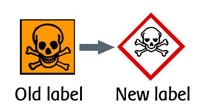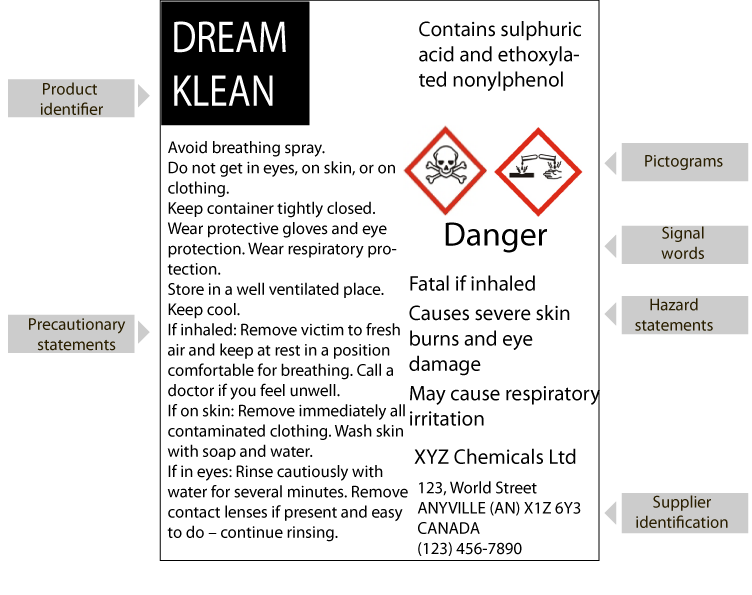
It is important to alert chemical transporters and users as to the risks they incur. To do so, many countries have their own classification and hazard labelling system (see box on REACH and WHMIS). In an effort to establish international harmonization, the United Nations adopted the Globally Harmonized System (GHS) in July 2003. The GHS is a classification system for chemicals presenting certain risks for humans or the environment, based on common, harmonized criteria according to the hazard presented.
These hazard classes are divided into 3 major groups:
Nine pictograms• have been established to represent these classes.
The pictograms recommended by the GHS (diamondshaped
labels edged in red with a white background) replace the square labels edged in black with an orange background. The old labels were revoked (i.e. they no longer have any legal effect) from 1st June 2015, however they may still remain in circulation until 1st June 2017.

| Physical hazards | |
|---|---|
 |
SGH 01 Explosive Unstable materials |
 |
SGH 02 Flammable |
 |
SGH 03 Oxidizer |
 |
SGH 04 Gas under pressure |
 |
SGH 05 Corrosive Skin/eye corrosion |
| Health hazards | |
|---|---|
 |
SGH 06 Acute toxicity Poisonous even at low concentrations |
 |
SGH 07 Acute toxicity/irritant Poisonous at high concentrations |
 |
SGH 08 Health hazard |
| Environmental hazards | |
|---|---|
 |
SGH 09 Hazardous to the aquatic environment |
Warning: some hazards are not represented by a pictogram.
It is very important to read the label fully.
A pictogram or combination of picto- Example of a label in compliance with the GHS guidelines grams indicates the type of hazard(s).
A complete label should include:
All products transported and sold must have a complete label and a material safety data sheet (MSDS).

Reach (Registration, Evaluation, Authorisation and restriction of CHemicals) is a regulation adopted by the European Union in 2006. It aims both to enhance knowledge of chemicals and to improve risk management for the environment and human health, without causing any negative economic impact on industry. It draws upon many elements of the GHS, in particular in terms of labelling.
The Workplace Hazardous Materials Information System (WHMIS) is Canada's national standard providing information on the safe use of hazardous materials in the workplace, through cautionary labelling, material safety data sheets and worker education programs. The harmonization of this system with the GHS has resulted in changes to labelling.
Last update: 8/11/2016